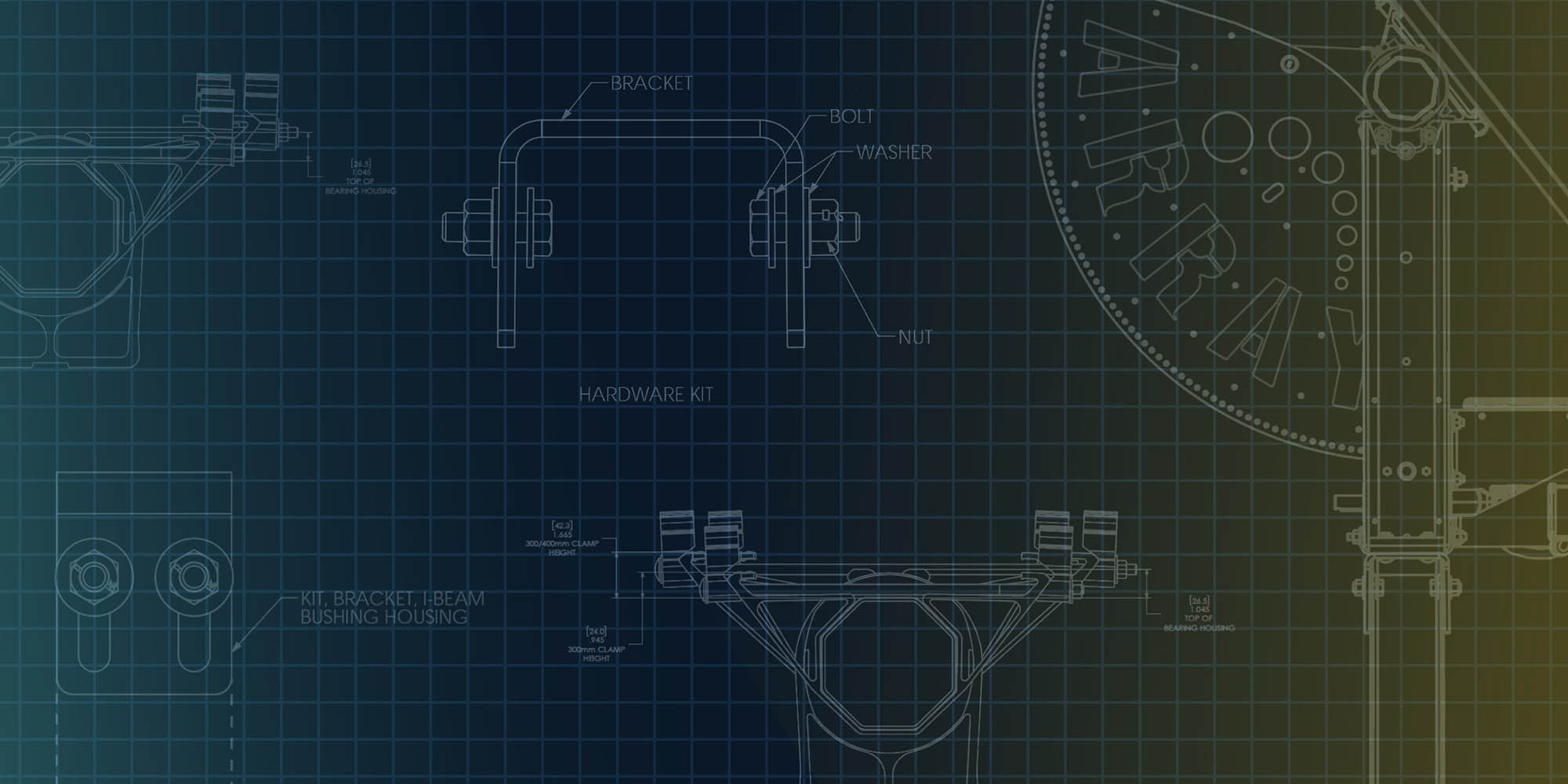Everything You Wanted to Know About Frost Heave, But Were Afraid to Ask
Introduction
The foundation of an Array Technologies solar tracker, as with any foundation, must be designed to resist reasonably likely loads that may be applied to it. The most common loads acting on an Array tracker are its self-weight; snow accumulation on the modules; and wind acting both vertically and horizontally on the tracker. In colder climates, foundations may need to be designed to address frost heave as well. All foundation types are susceptible to frost heave. However, we will limit this discussion to deep foundations, like driven piles, since those are the most common foundation types for Array trackers.
What is frost heave?
Frost heave is a phenomenon whereby frozen soil adheres to a foundation element, like a pile, and imparts upward pressure on the foundation when it expands. If the foundation element is unable to resist the upward pressure, it displaces with the soil. When the soil thaws, it may return to its original position. However, the foundation may not return to its original position. If this occurs over several cycles, the foundation could heave out of the ground.
What causes frost heave?
There are typically three ingredients needed for frost heave to occur: freezing temperatures, frost-susceptible soil, and shallow ground water. The first ingredient is obvious; without it there would be no frozen soil. Frost-susceptible soil contains a high silt content. Silt is a fine-grained soil, somewhere between sand and clay. The void spaces between the grains of silt are large enough to contain water, but small enough that water can migrate upwards in the soil through capillary action, much like how a wick draws oil up in a lantern. When the water in the soil freezes, it forms ice lenses and expands. Water in the soil freezes from the ground surface, downwards, when freezing temperatures persist. In order for more water to freeze, there must be a supply of water from below; surface water cannot penetrate the already frozen soil. Coarse-grained soil, like sand and gravel, also contain void spaces that can contain water. However, the voids are too large to allow for capillary action to draw additional water up from below. The particles of clay soil are extremely small with extremely small void spaces between them. This makes it very difficult for water to migrate through the clay. (Good thing, or clay pots would never work.) It should be noted that a site having all three ingredients necessary for frost heave does not guarantee that frost heave will occur. Similarly, a site that lacks one of the ingredients is not necessarily immune from frost heave. There are only degrees of susceptibility.
What do building codes say about frost heave?
Remarkably little. Most building codes suggest, or require, that foundations must terminate below the frost line. But this requirement is intended for shallow foundations like strip footings. A driven pile will always extend below the frost line. The problem is that building codes were developed primarily for buildings. For these kinds of structures, there is no issue with constructing the foundation below the frost line. So, the discussion of frost heave can end there. Because of this, or maybe in spite of it, building codes give no guidance on an appropriate or acceptable frost heave force to be applied to driven piles. For tacker foundations, we need to develop the loads we deem reasonable or likely. The few studies that have been conducted related to adfreeze (the bond that forms between frozen soil and steel piles) suggest a bond that can vary from as little as 5 psi to as much as 45 psi. These might sound like small values, but they are equivalent to 700 psf to 6500 psf. To put this in perspective, typical values of bond between non-frozen soil and a driven pile (skin friction) vary from about 25 psf to 700 psf.
How large is the frost heave force?
Calculating the uplift force on a pile due to frost heave is fairly simple. It’s just the adfreeze stress times the surface area of the pile in contact with frozen soil. Unfortunately, this simple equation has many unknowns. Should we consider an adfreeze stress of 5 psi, or 45 psi, or something in between? What is a reasonable frost depth? Most local building codes will specify this depth. But it is usually deeper than the actual depth of frozen soil. For a building foundation, this exact depth is not significant. But for a small pile, this has a large impact. Also, the entire frost depth does not freeze all at once. It could take weeks of freezing temperatures for the frost to penetrate 3 feet, or more. How does that affect the magnitude of frost heave force? We can calculate a lower bound and upper bound for the frost heave force by looking at the extremes. If we assume 5 psi adfreeze stress, a 12-inch frost depth, and a W6x9 pile, we would develop a frost heave force of about 1,700 lbs as a lower bound. On the other extreme, if we assume a 45 psi adfreeze stress, a 48-inch frost depth and a W6x15 pile, we would develop a frost heave force of over 77,000 lbs as an upper bound. A more typical value of adfreeze stress suggested in many geotechnical reports is 15 psi (from a Canadian design code.) If we assume a 36-inch frost depth and a W6x9 pile we would get a typical frost heave force of 15,000 lbs.
How to address frost heave in foundation design?
If the soil adheres to the pile, and if the soil heaves up, then the pile will heave with it. One solution to prevent this heave is to anchor the pile into the ground below the frost line to develop an uplift capacity that exceeds the uplift force from frost heave. For a driven pile, this uplift capacity is derived through the bond that develops between the soil and the pile (skin friction), and the embedment of the pile below the frost line. This solution typically involves embedment depths in excess of 20 feet. There are other deep foundation elements that can develop large uplift capacity with less embedment, such as screw piles and helical piles.
What are alternatives to resisting frost heave?
As mentioned above, “if the soil adheres to the pile…” Well, if we prevent the soil from adhering to the pile, then it doesn’t matter if the soil heaves; it won’t be able to take pile with it. Our preferred method of breaking the bond between the soil and the pile is to pre-drill an oversized hole through the frost depth at each pile location and backfill with clean, coarse sand before driving the pile. The sand acts like ball bearings between the native soil and the pile. Even though the sand breaks the soil/pile bond vertically, it still provides support for the pile laterally, so there is no penalty in the foundation’s performance. Of course, this alternative comes with a cost, both in material and time for installation. So, another alternative is to recognize that there is some risk associated with foundations in frost-susceptible regions and accept it. Instead of spending money on more expensive foundations, use that money for maintenance and repair foundations if and when needed.
Conclusion
Frost heave can be a challenging phenomenon to predict, quantify, and pay for. If it presents itself, the consequences can be expensive. Designing foundations to address frost heave can also be expensive. Since building codes are silent on how to design deep foundations with respect to frost heave, the client or owner must provide the basis for design. That is, they must provide guidance on what is considered acceptable. It is not possible to simply provide a design that “meets the code”. RPCS has extensive experience with designing and installing driven piles in areas where frost heave is a concern. We work closely with clients and owners to develop a solution that is both technically and financially viable.
Meet Mario Colecchia
Senior Structural Engineer
Welcome to RPCS’s Solar Engineering Blog Series: Everything You Wanted To Know About Solar Engineering But Were Afraid To Ask! Over the course of the year, Senior Structural Engineer Mario Colecchia will be providing an in-depth look at popular solar engineering topics while offering unique insights into RPCS’s project design challenges, solutions, and expertise.[/vc_column_text][/vc_column][/vc_row]

